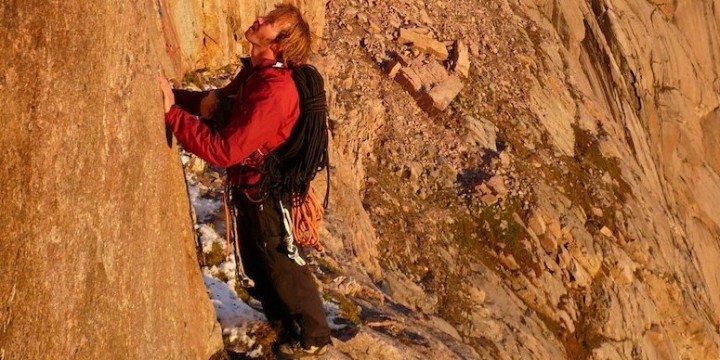
Climbing the Diamond
Hi Steph!
I have long been inspired by watching videos of you climbing the diamond, and this August I will have the chance to climb it as well! This will be my and my partner’s first true alpine climb, although we have been trad climbing for a while. I was wondering if you could give me advice on what to expect at the top (altitude adjustment, weather, route timing, or anything else), training, and packing. I’ve read some of your other blog posts, which have been very helpful (the camel method seems like a great idea!). I was also wondering what you recommend for a pack, and whether the weight/comfort trade off is worth it to invest in an ultra light pack. We were also considering bringing two 60m half ropes to reduce rope drag, have you ever used this method before? Any input you have would be appreciated!
Thanks,
Katy (Fort Collins, CO)
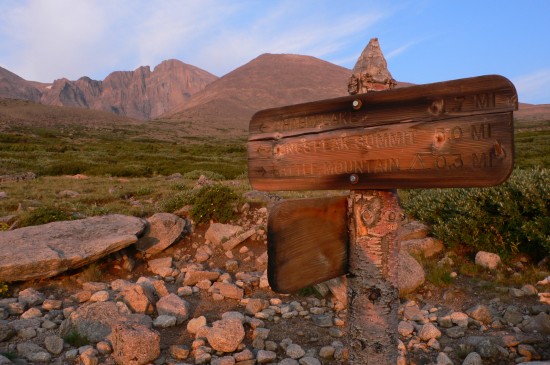
Hi Katy,
I don’t know if you want to bivy or not, but I recommend carrying a regular pack up to the bivy shelters above Chasm Lake with all your gear. Whether you bivy or not, use that shelter as a base spot to leave anything you won’t bring on the climb. I usually leave from there wearing my harness (no backpack), with everything I’ll have on the climb clipped onto the gear loops. One person can carry the lead rope backpack style, the other person can carry rack and tag line. So you really don’t need a pack from there. If you do leave any food, make sure to hang it off the lip of the bivy shelter or the marmots will eat it.
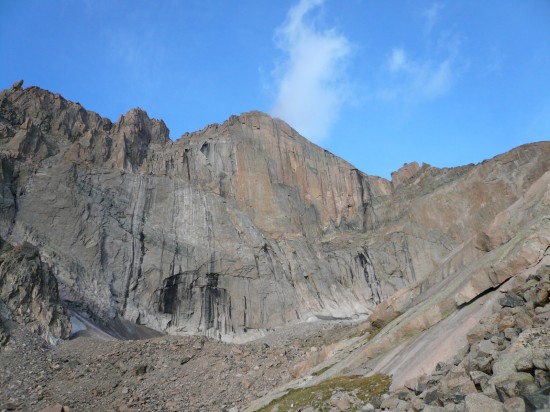
The Diamond is generally very straight up, so I don’t use double ropes (the disadvantages are that they can be harder to belay with and slow you down slightly on lead). Personally, I prefer walking off the top over rappelling. But I like to bring a tag line for “just in case”, and the disadvantage of the walk off is that you have to carry shoes up the route.
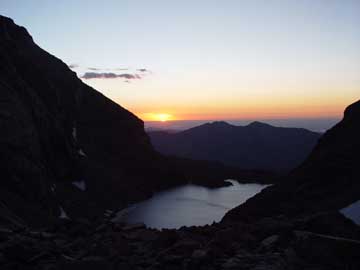
As you know, you want to get the super alpine start in hopes of avoiding being on the wall for the afternoon storms. It’s nice to walk up the morning before and take your time getting up there so you can bivy and just wake up at 3 or 4 to get going. The other option is to start hiking around 1 am and do it in a day. If you do bivy, you are supposed to go to the Park Station and get a bivy permit. It’s kind of a pain because it’s completely out of the way when you are heading over to Longs, so leave enough time to drive over there and deal with it.
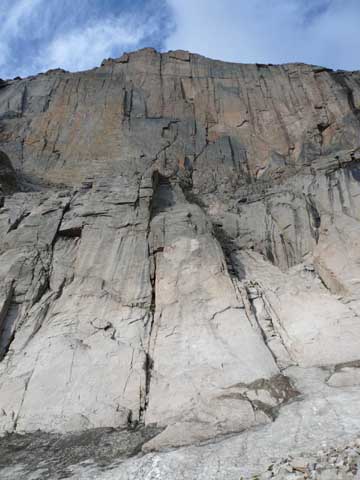
Some people like to bivy at the Boulder Field at Chasm View and rap into Broadway Ledge. The idea is that they don’t have to climb North Chimney. In my opinion, this is a very bad idea. You start your day with rappels (unpleasant), have to traverse all across the top of the North Chimney on loose terrain (hopefully not kicking rocks onto the people who may be climbing North Chimney), and then if you need to bail you are hosed because you will have to rap the entire North Chimney and then hike up the Camel back to the Boulder Field. So don’t do that. I usually just change into my climbing shoes at the base of North Chimney, and then you and your partner will solo up it. You can simul-climb it, but it’s really not worth it in terms of safety. Just be careful.
One key piece of beta: carry about a liter of water for the hike from the parking lot up through the forest, and just bring some iodine (and the neutralizer!) tablets for all water needs after that. You will cross a log bridge just when you leave treeline, and fill up your water there (and treat it). You can drink that until you get to Chasm Lake, and you can refill there again. There is also a small water runnel in the rocks close to the bivy shelters. I just use one iodine tablet per liter (I think they recommend 2), and have never had any trouble.
Other than that, all the tips I gave in the last posts about climbing long routes should give you all you need to know.
Have fun!
Steph







